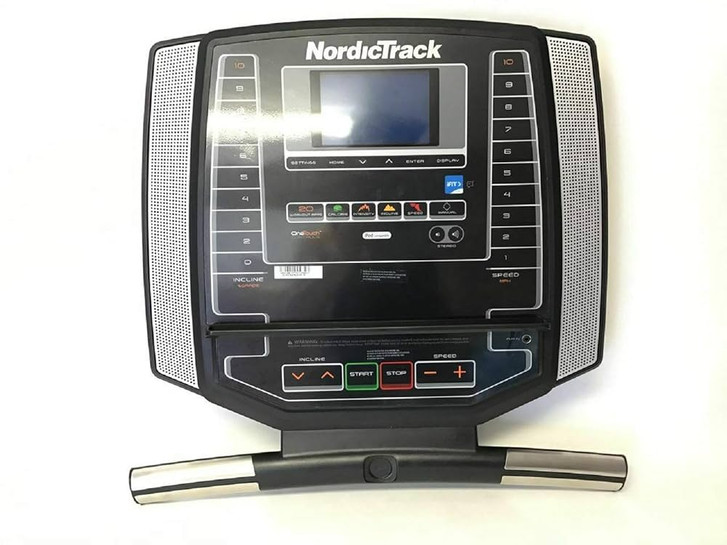Introduction to Recalibrating Your Nordic Track (ICON) Treadmill
Treadmills have become indispensable in home gyms, offering convenience for those looking to maintain their fitness regimen without stepping outside. Among the many brands available, Nordic Track (ICON) treadmills are favored for their advanced features and reliability. However, like any sophisticated machine, they occasionally require recalibration to ensure optimal performance.
Recalibration is essential for maintaining the treadmill’s accuracy, especially concerning its speed and incline settings. Over time, even slight deviations can significantly affect your workout outcomes, making recalibration an important aspect of treadmill maintenance. This article is designed to provide a comprehensive, step-by-step guide on how to recalibrate your Nordic Track (ICON) treadmill, ensuring it functions at its best.
Understanding how to recalibrate your treadmill not only enhances your workout experience but also extends the lifespan of the machine. This guide will walk you through the process, covering everything from the tools required to common troubleshooting tips, ensuring you have all the information needed to maintain your treadmill effectively.
Why Recalibration is Important
Recalibrating your Nordic Track (ICON) treadmill is paramount for several reasons. Firstly, it ensures that the treadmill’s speed and incline settings are accurate, which is crucial for those training for specific events or aiming to improve their fitness levels. Inaccurate settings can lead to ineffective workouts, as the treadmill may not provide the resistance or pace intended.
Secondly, regular recalibration can help prevent larger mechanical issues. By addressing small inaccuracies promptly, you can avoid more significant problems that could arise from continued use of a miscalibrated machine. This proactive approach can save time and money in the long run, reducing the need for professional repairs or part replacements.
Finally, recalibration contributes to user safety. An inaccurately calibrated treadmill might behave unpredictably, increasing the risk of injury. Ensuring the machine operates smoothly at all times protects users from potential harm during workouts. Given these factors, understanding and performing recalibration is not just a maintenance task but a crucial aspect of responsible treadmill ownership.
Tools Needed for Recalibration
Before beginning the recalibration process, gathering the necessary tools is crucial to ensure a smooth and efficient experience. While the tools required are generally minimal, having them ready beforehand can prevent interruptions and streamline the procedure.
- Allen Wrench: Often included with your treadmill, this tool is essential for adjusting the belt tension and making minor mechanical tweaks.
- Phillips Screwdriver: Useful for removing any covers or panels that may obstruct access to the treadmill's internal components.
- Spirit Level: This tool helps ensure that the treadmill is on a level surface, which is crucial for accurate calibration.
- Calibration Key or Paperclip: Some models require a calibration key or a bent paperclip to access the calibration mode.
- Towel or Cloth: Handy for cleaning any dust or debris from the treadmill components during the process.
Having these tools on hand will facilitate a smoother recalibration process, allowing you to focus on the task without unnecessary delays. Additionally, keeping a small notebook or digital device nearby to jot down any observations or settings changes can be beneficial.
Step-by-Step Guide to Recalibrating Your Nordic Track (ICON) Treadmill
Recalibrating your Nordic Track (ICON) treadmill involves several steps to ensure every aspect of the machine is functioning correctly. Follow this detailed guide to perform a thorough recalibration.
Step 1: Prepare the Treadmill
- Power Off: Ensure the treadmill is powered off and unplugged from the electrical outlet.
- Check the Surface: Use a spirit level to confirm the treadmill is on a flat, stable surface.
- Inspect the Belt: Look for any visible wear or misalignment on the treadmill belt.
Step 2: Enter Calibration Mode
- Insert the Safety Key: Place the safety key in its slot to enable the treadmill's control panel.
- Access Calibration Settings: Depending on your model, you might need to press specific buttons or use a paperclip to access the calibration mode. Refer to your user manual for precise instructions.
Step 3: Calibrate the Speed
- Start the Treadmill: Turn on the treadmill and set it to a low speed.
- Measure the Speed: Use a stopwatch to measure the time it takes for the belt to complete a full rotation at a set speed.
- Adjust as Needed: Compare the measured speed with the display reading and adjust using the controls until they match.
Step 4: Calibrate the Incline
- Test the Incline: Gradually increase the incline and observe any discrepancies between the display and the actual incline.
- Use Manual Adjustments: If inconsistencies are noticed, use the Allen wrench to manually adjust the incline motor.
Step 5: Final Checks
- Run a Test: Conduct a brief workout session to ensure the treadmill is operating smoothly.
- Power Down: Once satisfied, power off the treadmill and remove the safety key.
Step 6: Document Changes
- Record: Note any adjustments made and the current settings for future reference.
By following these steps, you ensure your treadmill is accurately calibrated, ready to provide precise workout data and a safer exercise environment.
Common Issues and Troubleshooting
Despite careful recalibration, treadmill users may encounter common issues. Understanding these potential problems and knowing how to troubleshoot them can enhance your maintenance routine.
Belt Slippage
- Symptoms: The treadmill belt may slip or hesitate during use, indicating a need for adjustment.
- Solution: Tighten the belt using the Allen wrench, making small adjustments to ensure proper tension without over-tightening.
Inaccurate Speed
- Symptoms: The treadmill speed does not match the display reading.
- Solution: Re-enter calibration mode and adjust the speed settings, ensuring the belt speed aligns with the display.
Incline Malfunction
- Symptoms: The incline feature does not respond or operates erratically.
- Solution: Check the incline motor connections and recalibrate the incline settings. If issues persist, consult the user manual or contact customer support.
Electrical Issues
- Symptoms: The treadmill fails to power on or shuts off unexpectedly.
- Solution: Inspect the power cord and connections, ensuring they are secure. Reset the circuit breaker if necessary.
By addressing these issues promptly, you can maintain the functionality of your treadmill and prevent more serious problems from developing.
Maintenance Tips After Recalibration
Following recalibration, implementing a regular maintenance routine is crucial to keep your Nordic Track (ICON) treadmill in top condition. Consistent care can extend the machine's lifespan and enhance its performance.
Regular Cleaning
- Surface Cleaning: Wipe down the treadmill surfaces with a damp cloth after each use to remove sweat and dust.
- Belt Cleaning: Periodically clean the belt and deck to prevent dust buildup, which can affect performance.
Lubrication
- Frequency: Lubricate the treadmill belt every three to six months, depending on usage frequency.
- Procedure: Use a silicone-based lubricant, applying it evenly under the belt as per the manufacturer's instructions.
Inspection
- Components Check: Regularly inspect the treadmill's components, such as the belt, rollers, and motor, for signs of wear.
- Address Wear: Replace worn parts promptly to maintain the treadmill's effectiveness and safety.
Incorporating these maintenance tips into your routine will ensure your treadmill remains a reliable part of your fitness regimen.
Frequently Asked Questions About Recalibrating Nordic Track (ICON) Treadmills
How Often Should I Recalibrate My Treadmill?
Recalibration frequency depends on usage. For frequent users, recalibrating every three months is advisable. Less frequent users might recalibrate every six months.
Can I Recalibrate Without Professional Help?
Yes, users can recalibrate their treadmills by following manufacturer guidelines and this comprehensive guide. However, professional assistance is recommended for persistent issues.
What If My Treadmill Does Not Have a Calibration Mode?
Refer to the user manual or contact customer support for alternative recalibration methods specific to your treadmill model.
Is Recalibration Necessary If My Treadmill Seems Fine?
Even if your treadmill appears to be functioning correctly, regular recalibration ensures continued accuracy and prevents potential future issues.
Conclusion
Recalibrating your Nordic Track (ICON) treadmill is crucial for maintaining its performance and ensuring a safe workout environment. By following this detailed guide, you can confidently recalibrate your machine, address common issues, and implement effective maintenance practices. Remember, a well-maintained treadmill not only enhances your fitness journey but also extends the lifespan of your investment.
For those looking to ensure their treadmill remains in peak condition, consider setting a regular maintenance schedule and keeping this guide handy for future reference. If further assistance is needed, don't hesitate to reach out to professional technicians or customer support. Your commitment to proper treadmill care is a vital step toward achieving your fitness goals


